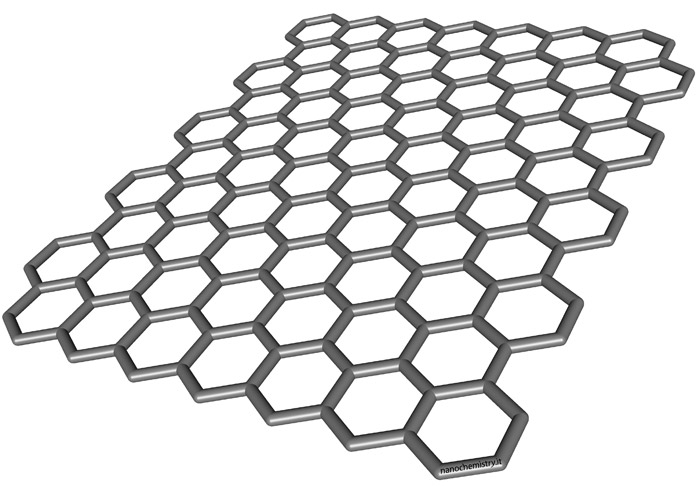Graphene sensor tracks down cancer biomarkers
Graphene, a six-ringed carbon, has become the centrepiece for new technologies.
Its ability to form atom-thin flat sheets is unique, making it a novel material for different technologies. Biotechnology, in particular, has advanced tremendously in the past two decades, with a special emphasis on cancer treatments and preventions.
By attaching special receptor molecules to the end of its chains, graphene can be used as a biosensor. The behaviour of the receptor molecules can be looked at to distinguish the presence of a certain protein, sometimes only present due to cancerous growth.
A screening was done with ELISA, an immunoassay test, to screen for the presence of certain proteins. This technology is responsible for detecting 8-hydroxydeoxyguanosine, a protein produced in abnormal amounts when DNA is damaged or altered. Damaged DNA is a sign of mutation, and the reason why normal cells become cancerous.
While the technique itself is remarkable, more impressive is its detection limit, which is five times more sensitive than current methods. Along with this increased sensitivity, the method also yields faster results.
New development in the field of medical technology is an incredible step for patient care. If this technology becomes widely available at a lower cost, it will lead to earlier cancer detection and thus better outcomes for patients.
Nanotubes increase plant production of energy
Chemical engineers from the Massachusetts Institute of Technology (MIT) have been able to integrate nanotechnology into individual plant cells. By placing carbon nanotubes into chloroplasts—the energy-producers of the cell—the engineers observed an increase in cell efficiency.
Although impossible to measure the exact amount of increase in energy production, the researchers used a colour-changing dye to detect free electrons. The dye therefore changed proportional to the energy in the cell.
After the group found these results, they investigated whether this technology could decrease the presence of free radicals, which are molecules with unpaired electrons. While free radicals are the result of normal metabolic processes, they unfortunately contribute to DNA damage, which can ultimately change the structure of proteins. The larger the scale, the more concerning this becomes in terms of mutating normal cells.
When the team measured the concentration of free radicals in the cells, they found a 27 per cent decrease in those that had the nanotubes.
They also applied this technology to chemical detection, which is important for use in toxic environments. Nanotubes were able to detect the presence of nitric oxide—a free radical and combustion byproduct—in the environment. The industrial uses are promising.
When bros share brews
Binge-drinking in men is far more common than in females, according to a new paper published in the Clinical Psychological Science. The journal—from the Association for Psychological Science—has found that this may be attributed to the social aspect of drinking.
Researchers linked gender and alcohol to what they termed “emotional contagion.” Seemingly ominous, it is quite the opposite; smiles—not pathogens—affected the group.
In the study, all participants were strangers, with a mix of both males and females. The subjects were given alcoholic drinks, non-alcoholic drinks, or a placebo, with their group interactions recorded.
As the results were reviewed, there was a striking trend towards smiling.
The smiling was associated with self-reported reward and normal drinking patterns in males. As men drank more, they smiled more, affirming their actions.
Contagious smiling is far less prevalent in sober males, and even less when compared to sober females.
The study concluded that alcohol closes the gap between the prevalence of smiling in sober males and females. More importantly, excessive drinking’s etiology is consequently drawn from a social-reward factor.








